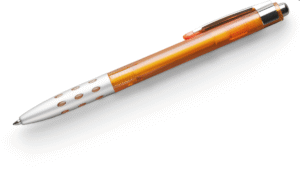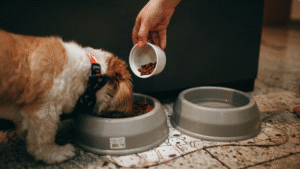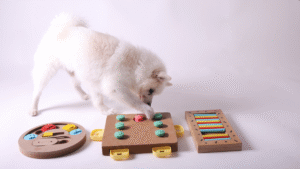Dog training is one of the most rewarding activities for any dog owner. It strengthens your bond, improves communication, and helps you raise a happy, well-mannered companion. However, when you first start training your pup, it can be discouraging to see the high prices of professional dog training tools and equipment.
The good news is that you don’t need to spend much money to train your dog successfully. With a bit of creativity and ingenuity, you can make or find alternatives that cost far less than their store-bought versions — and they work just as well.
In this post, we’ll share five cheap alternatives to dog training equipment that you can easily make or find at home. These budget-friendly ideas are perfect for both beginners and experienced trainers looking to save money while still getting excellent results.

1. DIY Dog Clicker — Use a Pen or Jar Lid Instead
Clicker training is one of the most effective and widely used positive reinforcement methods. A clicker is a small device that makes a distinct clicking sound to mark the exact moment your dog performs a desired behavior. This sound helps your dog associate the action with a reward, making learning faster and clearer.
If you don’t have a commercial clicker, don’t worry — there are plenty of inexpensive substitutes you can use:
-
Retractable pen: Many retractable pens make a firm clicking sound that works perfectly for training. Just make sure it’s sharp and consistent.
-
Jar lid: Pressing the metal lid of a mason jar or a small tin can create a similar “click” sound.
-
Tongue click: You can even train your dog to respond to the clicking sound you make with your tongue — and it’s completely free.
The key is consistency. Always use the same sound to mark good behavior and follow it immediately with a treat or praise.

2. Homemade Dog Treat Pouch — Use a Fanny Pack or Small Bag
When actively training your dog, it’s important to have quick access to treats so you can reward good behavior instantly. You don’t need to buy an expensive professional treat pouch — here are some affordable and practical alternatives:
-
Old fanny packs or waist bags: These are great for holding treats, poop bags, keys, or your phone during walks or training sessions.
-
Reusable sandwich bags or small zip pouches: These can easily clip onto your belt loop or fit in your pocket.
-
DIY fabric pouch: If you enjoy simple sewing, make a small pouch with a drawstring or Velcro closure from old fabric or a t-shirt.
The main goal is convenience — your treats should be easy to reach so you can reward your dog at the right moment.
Training tip: Keep your treat pouch filled with small, soft, and smelly treats. Dogs respond better to quick and tasty rewards during training.

3. Homemade Agility Equipment — Use Household Items
Agility training is a fun and rewarding way to build your dog’s focus, confidence, and coordination. But professional agility kits can be expensive. Luckily, you can easily create your own setup using common household items.
Here are a few simple ideas:
-
Weave poles: Use broomsticks, mop handles, or PVC pipes stuck in the ground in a straight line.
-
Jump bars: Balance a broomstick or pool noodle across two chairs or buckets for adjustable jumps.
-
Tunnels: A child’s play tunnel or a large cardboard box can work perfectly as a tunnel for smaller dogs.
-
Pause table: Use a sturdy, low coffee table or wooden crate as a platform where your dog pauses and waits for the next command.
Just make sure everything is stable and safe — no sharp edges or slippery surfaces. With a little effort, you can set up a fun, affordable backyard agility course that keeps your dog both physically active and mentally stimulated.
4. Replace Expensive Leashes and Harnesses with Smart Alternatives
Leashes, harnesses, and long lines are essential for controlling and guiding your dog during walks and recall training. But they can also be pricey. Here are some clever, low-cost alternatives:
-
Long rope or clothesline: A sturdy rope (20–30 feet long) can serve as a recall training line. Just make sure it’s strong enough for your dog’s size and weight.
-
Modified leash: If you have an old leash, attach a carabiner clip to extend it or connect it to another rope for extra length.
-
Soft cloth harness: For small or medium-sized dogs, you can make a simple harness using an old t-shirt or wide fabric strips.
Safety tip: Never compromise on safety or comfort. Ensure your DIY leash or harness is strong, secure, and doesn’t cause friction or discomfort to your dog’s skin.

5. DIY Dog Puzzle Toys — Keep Your Dog Mentally Engaged
Physical exercise is essential, but mental stimulation is equally important for a balanced, happy dog. Puzzle toys help tire out your dog’s brain, reduce boredom, and prevent destructive behaviors like chewing or digging. Store-bought puzzle toys can be expensive, but you can easily make your own.
Here are some fun and easy DIY options:
-
Muffin tin game: Place treats in a muffin tin and cover each one with a tennis ball. Your dog must figure out how to remove the balls to get the treats.
-
Towel roll puzzle: Roll treats inside a towel, twist or knot it, and let your dog unroll it to find the rewards.
-
Plastic bottle treat dispenser: Cut small holes in a clean plastic bottle and fill it with kibble. As your dog rolls it around, treats will fall out.
-
Cardboard box treasure hunt: Hide treats or toys in an old box and let your dog dig around to find them.
These homemade puzzle toys provide mental enrichment and problem-solving practice, making them perfect for days when you can’t take your dog for a long walk.
Bonus Tip: Use Household Items as Training Aids
You don’t always need specialized training tools to teach your dog obedience or tricks. Many everyday household items can double as effective training aids:
-
Plastic lids can be used as targets for teaching “touch” or “place” commands.
-
Chairs and stools work great for “under,” “jump,” or “stay” training.
-
Blankets or mats can help reinforce calm behavior and boundary training.
Be creative and resourceful — dogs don’t care about fancy gear. What matters most is your communication, consistency, and the rewards you give.

Why DIY and Budget Training Works
Making your own dog training tools isn’t just about saving money — it also helps you become a more observant and creative trainer. Dogs respond best to interaction, patience, and repetition, not fancy gadgets. By creating your own training aids, you:
-
Gain a deeper understanding of your dog’s learning process
-
Customize training tools for your space and your dog’s personality
-
Build stronger trust and engagement with your pet
After all, the most valuable part of any training session is you — your consistency, patience, and encouragement. A $1 pen can make just as effective a clicker as a $20 one when used correctly.
Final Thoughts
You don’t need to spend a fortune to train your dog effectively. With these five cheap alternatives to dog training equipment, you can turn everyday household items into practical tools for teaching obedience, agility, and focus. Whether it’s a DIY clicker, a homemade treat pouch, or a simple puzzle toy, your dog will benefit from the effort, time, and love you put in.
Remember, the secret to successful dog training isn’t in the tools — it’s in the trainer. With creativity, patience, and consistency, you can raise a well-behaved, happy dog and strengthen the special bond you share — all without breaking the bank.
- 5 Cheap Alternatives To Dog Training Equipment - November 12, 2025
- Homemade Calming Spray To Help Dogs During Training - November 12, 2025
- 7 DIY Dog Training Tools You Can Make From Household Items - November 12, 2025
